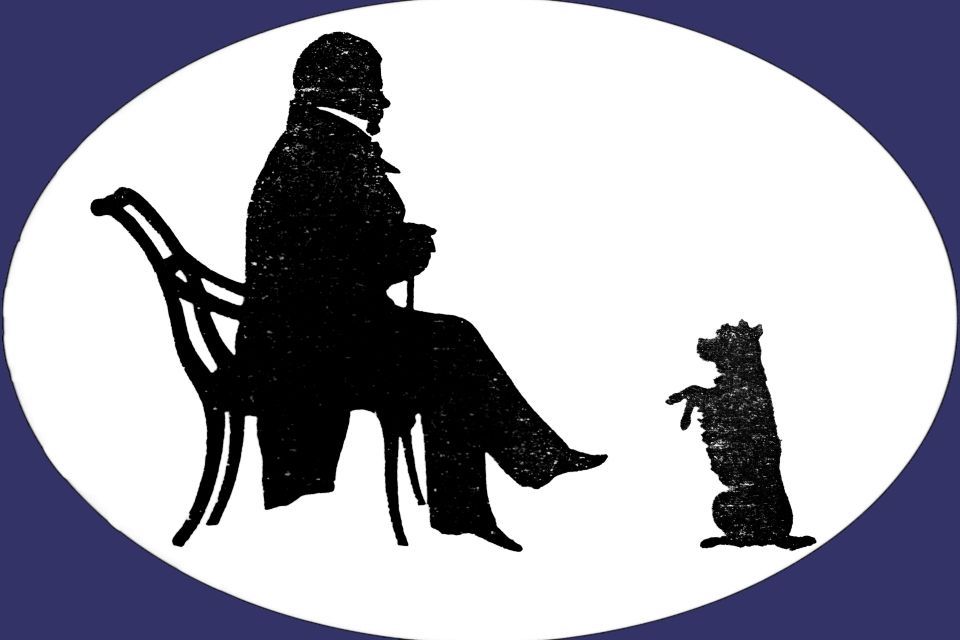Out-of-the-way Reading and Hoary-headed Tradition: Walter Scott’s Supernatural Scholarship and Poetry
Thursday 2nd October 2025
Summary of the Talk:
Dr Harries explored Walter Scott’s lifelong engagement with supernatural belief, tracing how his reading habits and scholarship on witchcraft, demonology, and folklore shaped his poetry and prose.
Scott’s idea of “out-of-the-way reading” referred to his deliberate choice to read neglected or esoteric works—particularly Scottish texts about witches, fairies, and folklore—rather than the classical or philosophical sources favoured by his Romantic contemporaries. His term “hoary-headed tradition” captured the oral and local nature of these superstitions.
Harries argued that Scott balanced rational scepticism and imaginative belief, and that his poetry mediates between scholarship and superstition. His handling of the supernatural was never credulous, but neither was it dismissive: it occupied a middle ground between Enlightenment reason and Romantic imagination.
Key Points by Section
1. Supernatural Scholarship
- Scott’s Abbotsford library reveals a methodical study of supernatural material—his “Witch Corner” contained hundreds of books on demonology and folklore.
- He distinguished between moral, scholarly works (like Francis Hutchinson’s Historical Essay Concerning Witchcraft, 1718) and sensationalist or exploitative ones (such as Boulton’s Compleat History of Magick, 1715).
- His marginalia show concern for authorial integrity and the social consequences of reviving superstition irresponsibly.
2. Authorial Responsibility
- Scott believed authors had a duty to present supernatural material responsibly, aware of how credulous readers might misinterpret it.
- He saw literature as a form of enchantment that could be morally uplifting or harmful, depending on how it was handled—a theme symbolised by the spell-book in The Lay of the Last Minstrel.
3. Reading Circles
- Scott circulated rare supernatural texts (e.g., Robert Kirk’s Secret Commonwealth) only among trusted “initiated” scholars and antiquarians.
- This reflects his view that such material required context and careful framing.
4. The Function of Notes in Scott’s Poetry
- Scott’s extensive poetic notes (especially in The Lay of the Last Minstrel and The Lady of the Lake) were not just explanatory but creative—parallel narratives that reveal his thinking.
- These notes blend folklore, scholarship, and anecdote, allowing him to explore superstition critically while sustaining its imaginative power.
5. The “Marvellous” in Poetry
- Scott believed supernatural elements must grow naturally from “popular tradition or belief” within a given landscape to be convincing.
- He rejected gratuitous horror or invention detached from local custom.
- For Scott, “the marvellous” (rooted in human superstition) was distinct from “the fabulous” (mere fantasy).
6. Examples from the Poetry
- The Lay of the Last Minstrel: the wizard Michael Scott and the goblin page Gilpin Horner embody this balance—drawn from tradition yet framed with scholarly restraint.
- The Lady of the Lake: Brian the Hermit and the magical Trossachs landscape illustrate how legend, topography, and superstition interweave.
- Scott often juxtaposes rational notes with mystical scenes, creating a “half-and-half” blend (as later observed by Hogg and Coleridge).
7. Preservation of Tradition
- Harries emphasised that Scott viewed folklore and superstition as part of Scotland’s historical record—“the records of human superstition”.
- By reviving these, he resisted the erasure of Scottish cultural identity in the modern age.
- His poetry becomes both preservation and transformation: rational enough for Enlightenment readers, but faithful to “hoary-headed tradition”.
Noteworthy Insights
- Abbotsford’s “Witch Corner” was more than curiosity—it was a working research archive that shaped Scott’s creative world.
- His selective distribution of The Secret Commonwealth (only 100 copies) shows his caution and elitism regarding dangerous ideas.
- The dialogue between text and notes in his poetry enacts his own internal tension between scepticism and belief.
- Scott’s landscapes (Melrose, Loch Katrine, the Trossachs) function as bridges between natural and supernatural, with moonlight, mist, and sound transforming real places into fairy realms.
- His rejection of classical “machinery” in favour of Scottish myth and folklore marked a decisive national turn in Romanticism.
- Harries positioned Scott as both
collector and mediator—not credulous believer nor dry rationalist, but someone using poetry to keep the marvellous alive in an age of reason.
Download the [transcript] of the talk and the [powerpoint]
Full article here: Journal of Irish and Scottish Studies
Introduction by Prof. Penny Fielding:
Dr Natalie Tal Harries is a Research Fellow at the University of Aberdeen, and Assistant Director of the Walter Scott Research Centre, working on the AHRC funded project, The Edinburgh Edition of Walter Scott’s Poetry: Engaging New Audiences. She is also a Research Associate on the 21st Century Oxford Authors edition of the work of Percy Bysshe Shelley at the University of Sheffield, and she completed an Early Career Research Fellowship at the Institute of English Studies (University of London) last year. Her published research examines Samuel Taylor Coleridge and Percy Bysshe Shelley’s engagement with aspects of Neoplatonic, Hindu and Indian philosophy and symbolism, and Walter Scott’s supernatural scholarship and poetry. She is co-editing a collection of essays on the figure of the Angry Woman in literature and culture with colleagues from Aberdeen, and her next research project focuses on the out-of-the-way reading of Romantic poets and writers, starting with Walter Scott.


